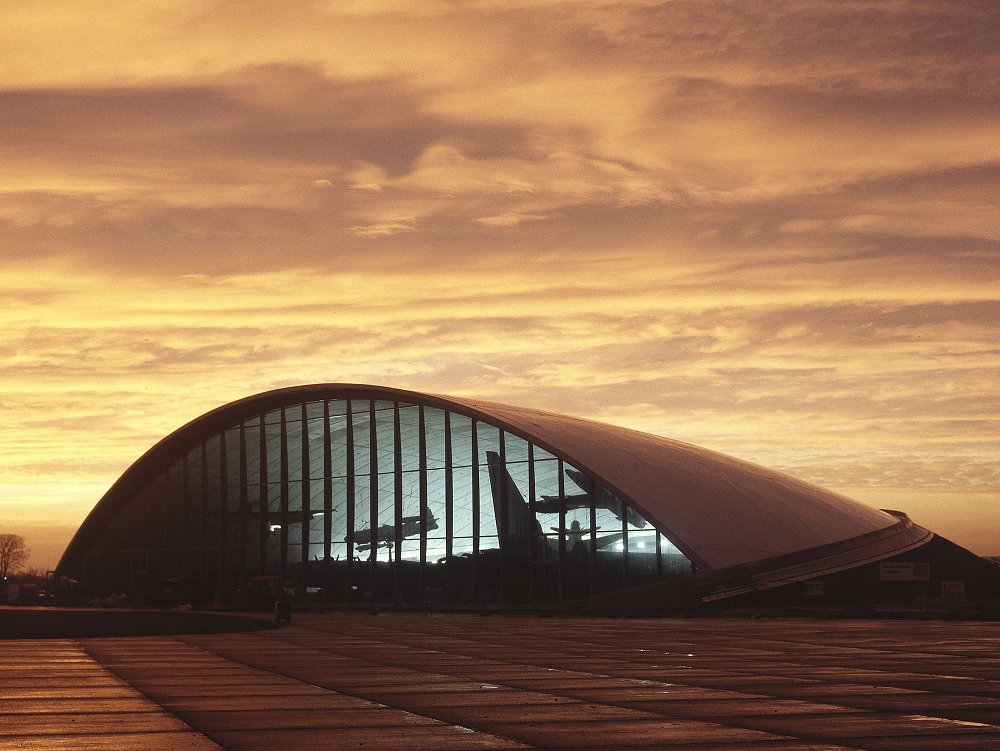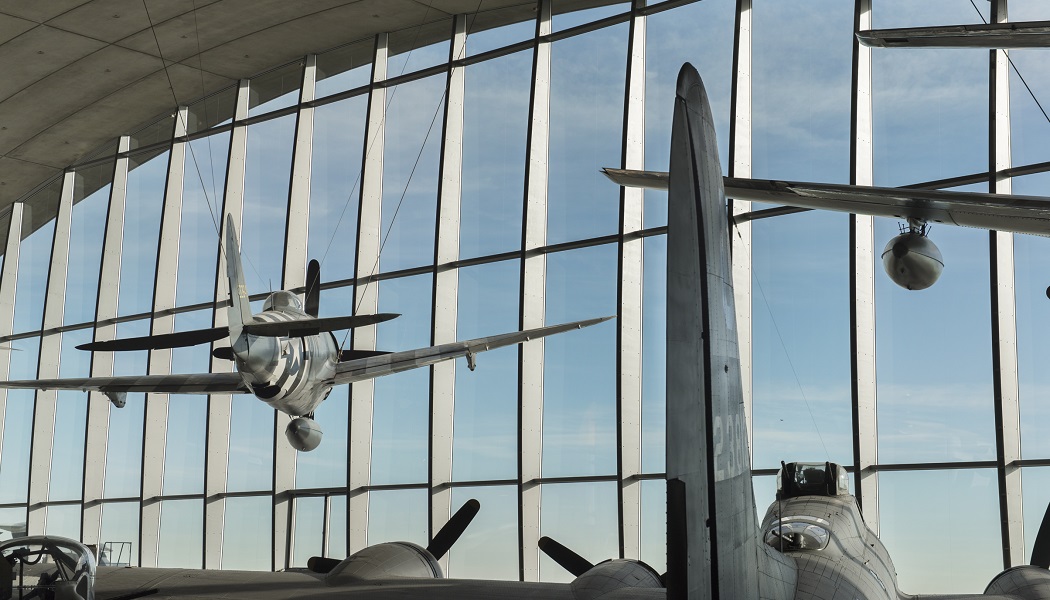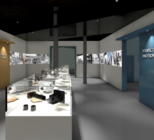The largest air museum in Europe, the venue was built by Imperial War Museums at its Duxford site between 1995 and 1997 in order to exhibit its collection of American military aircraft.

The structure, designed by Foster + Partners architects in collaboration with Ove Arup and Partners as consulting engineers, scooped the 1998 RIBA Stirling Prize and this partly explains why the building has received listed status despite not yet being 30 years old – the customary minimum age to be considered.
Duncan Wilson, chief executive of Historic England, states that it is “important to recognise and protect the work of architects like Foster who have helped to shape much of England’s modern landscape and this site is special for the stories it tells about 20th century air combat”.
What makes the American Air Museum so important?
The structure is at once innovative and sympathetic to the pre-existing architecture on the IWM Duxford site, a former RAF and United States Army Air Forces station that is home to many historic listed buildings.
The venue’s iconic curved concrete roof, said to have been inspired by the stressed skin structure often seen in aircraft construction, gives a nod to aeronautical engineering and ties the museum to its subject matter.
“The curved-torus roof form is generated in part by the largest aircraft in the collection, the mighty B-52 bomber. Spanning 90 metres, the roof shell is made of two layers of concrete that can support a point load of up to twelve tonnes, with the central space looking onto the active runway. The collection and the architecture together, are a celebration of flight,” explains renowned architect Norman Foster, founder and executive chairman of Foster + Partners.
Geometric features employed throughout the design made the structure simple to manufacture and build, while the use of open space and a mezzanine continues to make for a functional, visitor friendly exhibition space – especially pertinent in the era of social distancing.
The designation also includes Counting the Cost, a memorial glass sculpture situated at the ramp leading to the museum entrance.
The work by Renato Niemis, comprising 52 glass panels engraved with silhouettes of the 7,031 American aircraft lost on operations, pays tribute to the 30,000 airmen who lost their lives flying out of British bases during the Second World War.

“The American Air Museum tells a hugely important story in not only the history of IWM Duxford, but of the allied forces during the Second World War, highlighting the contribution that thousands of American service men and women made to the conflict,” notes John Brown, executive director of commerce and operations at IWM.
“We needed the building that houses those fascinating stories to be a fitting testament to their service, and that was definitely achieved.”










